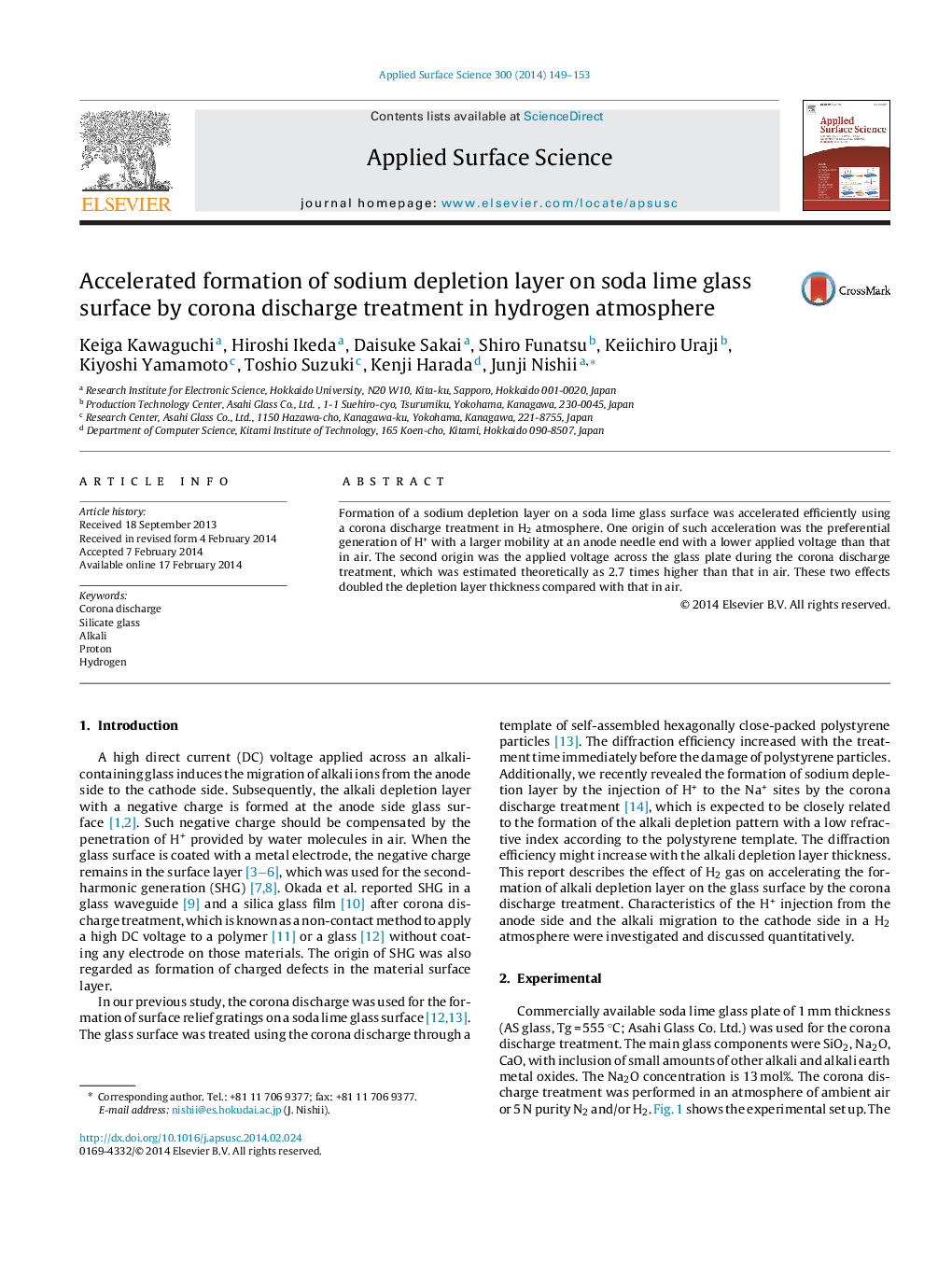| Article ID | Journal | Published Year | Pages | File Type |
|---|---|---|---|---|
| 5357372 | Applied Surface Science | 2014 | 5 Pages |
Abstract
Formation of a sodium depletion layer on a soda lime glass surface was accelerated efficiently using a corona discharge treatment in H2 atmosphere. One origin of such acceleration was the preferential generation of H+ with a larger mobility at an anode needle end with a lower applied voltage than that in air. The second origin was the applied voltage across the glass plate during the corona discharge treatment, which was estimated theoretically as 2.7 times higher than that in air. These two effects doubled the depletion layer thickness compared with that in air.
Related Topics
Physical Sciences and Engineering
Chemistry
Physical and Theoretical Chemistry
Authors
Keiga Kawaguchi, Hiroshi Ikeda, Daisuke Sakai, Shiro Funatsu, Keiichiro Uraji, Kiyoshi Yamamoto, Toshio Suzuki, Kenji Harada, Junji Nishii,
